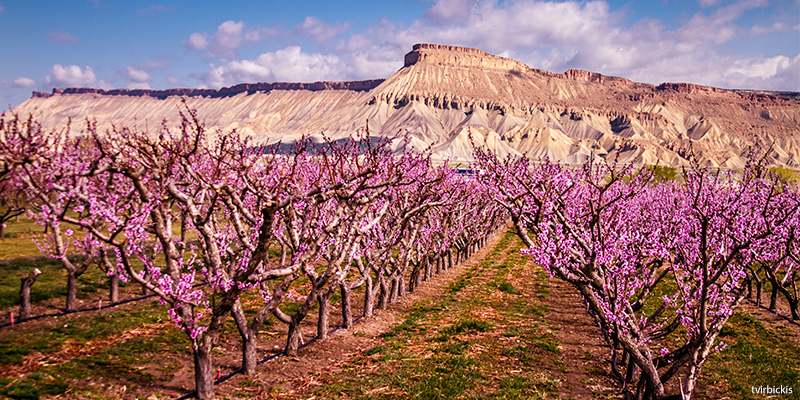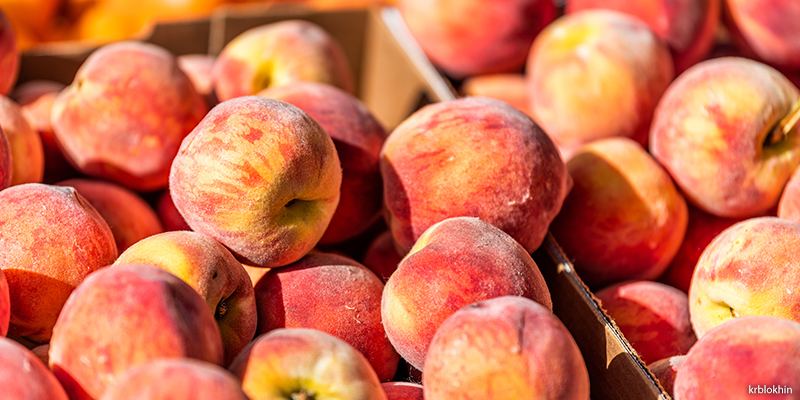
Gusty winds are expected from portions of the Mid-Atlantic into the Northeast through the night following the system that brought rain to the area. An atmospheric river will move into the Northwest late today into Saturday bringing moderate to heavy rainfall, mountain snow, windy conditions, and high surf to the area over the weekend. Read More >
Grand Junction, CO
Weather Forecast Office
Overview
|
On April 13th, 2020 an arctic cold front swept through the region bringing record temperatures to portions of western Colorado and eastern Utah. On the morning of the 14th the Grand Junction airport had a low temperature of 19 F, which set a new daily record. This was about 17 degrees below the average low for this time of year. credit: Dennis Webb
Many of the lower valleys across western Colorado rely on agriculture to make a living. In Mesa County that industry is largely comprised of fruit and more specifically peaches. The peach industry in Colorado is worth close to $40 million a year, with most of that based in Mesa County. The area around Palisade Colorado offers a unique micro-climate that makes conditions there perfect for growing peaches. Palisade sits at the mouth of the De Beque canyon along the Colorado River. As the air cools at higher elevations in the late evening it begins to flow downhill. Once it reaches Palisade it rushes into the open valley. This movement of air close to the surface actually inhibits a strong nocturnal temperature inversion from developing. As a result, the nighttime temperatures are much warmer as compared to locations further west like in Fruita where strong inversions develop as the winds slow down. This typically allows the area around Palisade to avoid freezes early in the growing season. Unfortunately, the air mass on April 14th was so cold nothing could stop it from harming the crops.
credit: tvirbickis
Like most crops peaches start to sustain damage around temperatures of 28 F and colder. On April 14th several orchards dropped into the lower to mid 20's, which meant several hours below 28 F. Some orchards lost between 50-100% of their crop for that season. The damages in Mesa County were estimated to be around $ 20 million. The last time this area saw similar crop damage was in 1997 and 1999.
credit: krblokhin |
Hazards
Detailed Hazards Viewer
National Briefing
Outlooks
Transportation Decision Support
Winter Storm Severity Index
Forecasts
Aviation Weather
Fire Weather
Forecast Discussion
Forecast Points
Local Area
Severe Weather
Soaring Forecast
Winter Weather
Hydrology
Recreational River Report
River Forecast
Weather Safety
Preparedness
NOAA Weather Radio
StormReady
SkyWarn
US Dept of Commerce
National Oceanic and Atmospheric Administration
National Weather Service
Grand Junction, CO
2844 Aviators Way
Grand Junction, CO 81506-8644
970-243-7007
Comments? Questions? Please Contact Us.




